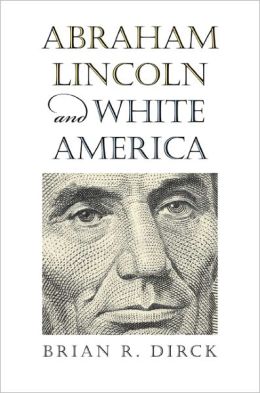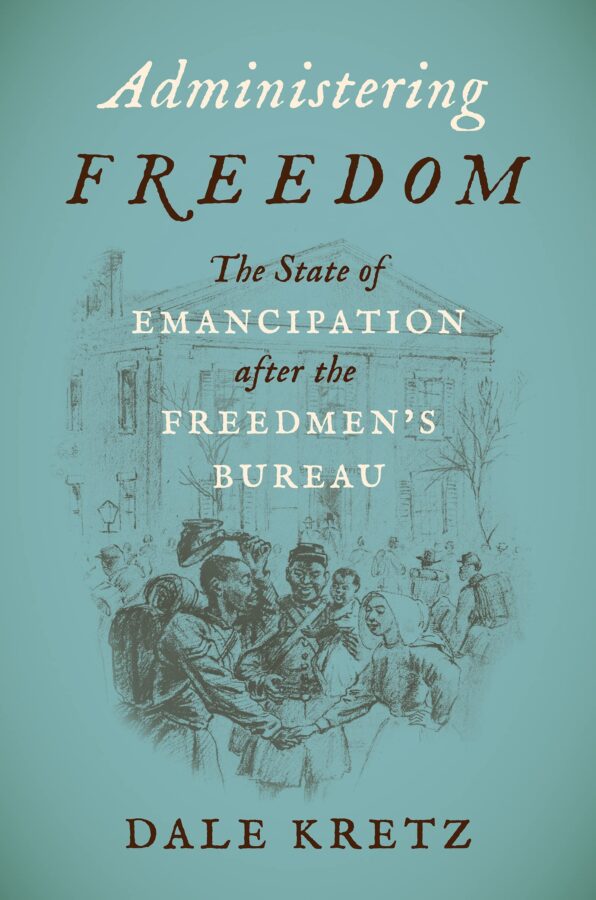Abraham Lincoln and White America by Brian R. Dirck. University of Kansas Press, 2012. Cloth, ISBN: 0700618279. $29.95.
 Countless books and articles about Abraham Lincoln’s views and policies on slavery and race have appeared over the years, but Brian Dirck is the first historian to explore Lincoln’s identity as a white man at any length. Studies of “whiteness” of course are no longer new, but Abraham Lincoln and White America offers new insights without the jargon and theoretical huffing and puffing that often accompany such works. Here is a fine Lincoln scholar at the top of his game, and the result is a stimulating book that will be of great value to scholars and students alike.
Countless books and articles about Abraham Lincoln’s views and policies on slavery and race have appeared over the years, but Brian Dirck is the first historian to explore Lincoln’s identity as a white man at any length. Studies of “whiteness” of course are no longer new, but Abraham Lincoln and White America offers new insights without the jargon and theoretical huffing and puffing that often accompany such works. Here is a fine Lincoln scholar at the top of his game, and the result is a stimulating book that will be of great value to scholars and students alike.
According to Dirck, most people admire Lincoln and often avoid asking hard questions about him. In contrast, this book brims with hard questions. For Dirck, the central premise is that Lincoln was a white man living in a white society. He did not transcend racial divisions even as his own views evolved. Lincoln’s first encounters with slaves and free blacks are not well documented and often shrouded in myth. Therefore the early chapters of this book are the most speculative, and the analysis occasionally outpaces the evidence. Yet for a subject fraught with interpretative snares, Dirck manages to avoid most of them and brings a fresh voice to the entire subject.
He maintains that there is no reason to believe that Lincoln’s attitudes on race set him apart from his white neighbors in Kentucky, Indiana, or Illinois, though Lincoln often cut against the grain of his own time. Lincoln may have enjoyed exchanging smutty (and sometimes racist) stories, but he seldom swore, avoided alcohol, and never joined a church. His relationship with his family and his social environment was neither easy nor simple. Lincoln almost literally ran away from his father and his humble origins. Yet as Dirck perceptively shows, the intensely ambitious Lincoln—whatever he might have thought about other people—did not view himself as poor white trash.
Lincoln appears to have had an early revulsion against slavery though as a young man he showed little empathy for slaves. Lincoln privately acknowledged racial injustice, observed racial differences without any particular malice, but did not publicly challenge white racial views. Fears of a growing black population, the potential for race war, and pseudo-scientific racism were important parts of the social milieu. Lincoln’s archrival Stephen A. Douglas championed white democracy, making frequent and often crude appeals to white supremacy. In Dirck’s view, Douglas often described blacks as “monsters” while Lincoln at his worst described them as “buffoons” (72). Lincoln never compared African Americans to animals even as he rejected the idea of social equality. He explicitly deplored race mixing but did not use fears of amalgamation to win votes. This may seem like a fine distinction yet it mattered a great deal not only in assessing Lincoln’s character but also his wartime performance in office.
As President, Lincoln managed to calm white racial fears, recognizing that many northerners held deeply racist convictions. Therefore emancipation had to be gradual and preferably compensated. Throughout his career Lincoln had endorsed the voluntary colonization of freed slaves, a measure that was as politically and racially expedient as it was unjust and impractical. Even this most skillful of politicians occasionally lost his deft touch in dealing with such explosive issues. In one wartime meeting with a group of black leaders, the President adopted a condescending and at times censorious tone. Dirck rightly sees this as a low point in Lincoln’s relationship with African Americans.
Throughout the war when Lincoln spoke about slavery and race, he was mostly talking to white people. Yet once the final Emancipation Proclamation was issued, his approach changed. Unwilling to retreat from this revolutionary step, Lincoln showed less and less patience with white objections and fears. He had always treated black servants well by the standards of the time, but now he began to exhibit greater empathy. For sure, he still told racial jokes and did not abandon the chimera of colonization. Yet he praised African American soldiers and now seemed more willing to challenge racial conventions as when he warmly welcomed Frederick Douglass to the White House. In the second inaugural, Lincoln eloquently laid out the complicity of white northerners and southerners in the sin of slavery. Despite this striking example, Dirck concludes that Lincoln’s attitudes toward African Americans had changed more than his views of white people. The assassination and martyrdom of Abraham Lincoln has for nearly a century and a half led to much speculation about how his shifting and pragmatic views might have changed the nature of southern reconstruction. However that might be, Dirck’s carefully measured assessment of Lincoln—the white president—deserves wide attention and careful study.
George C. Rable is the Charles G. Summersell Chair in History at the University of Alabama, a former Lincoln Prize recipient, and most recently the author of God’s Almost Chosen Peoples (2010).
